Which HexClad pan is best for you? A chef's guide to building a collection to cover all of your cookery needs
HexClad has a pan for everything, from making fluffy omelets to sizzling stir-fries, so I've whittled down my favorites to help you shop wisely
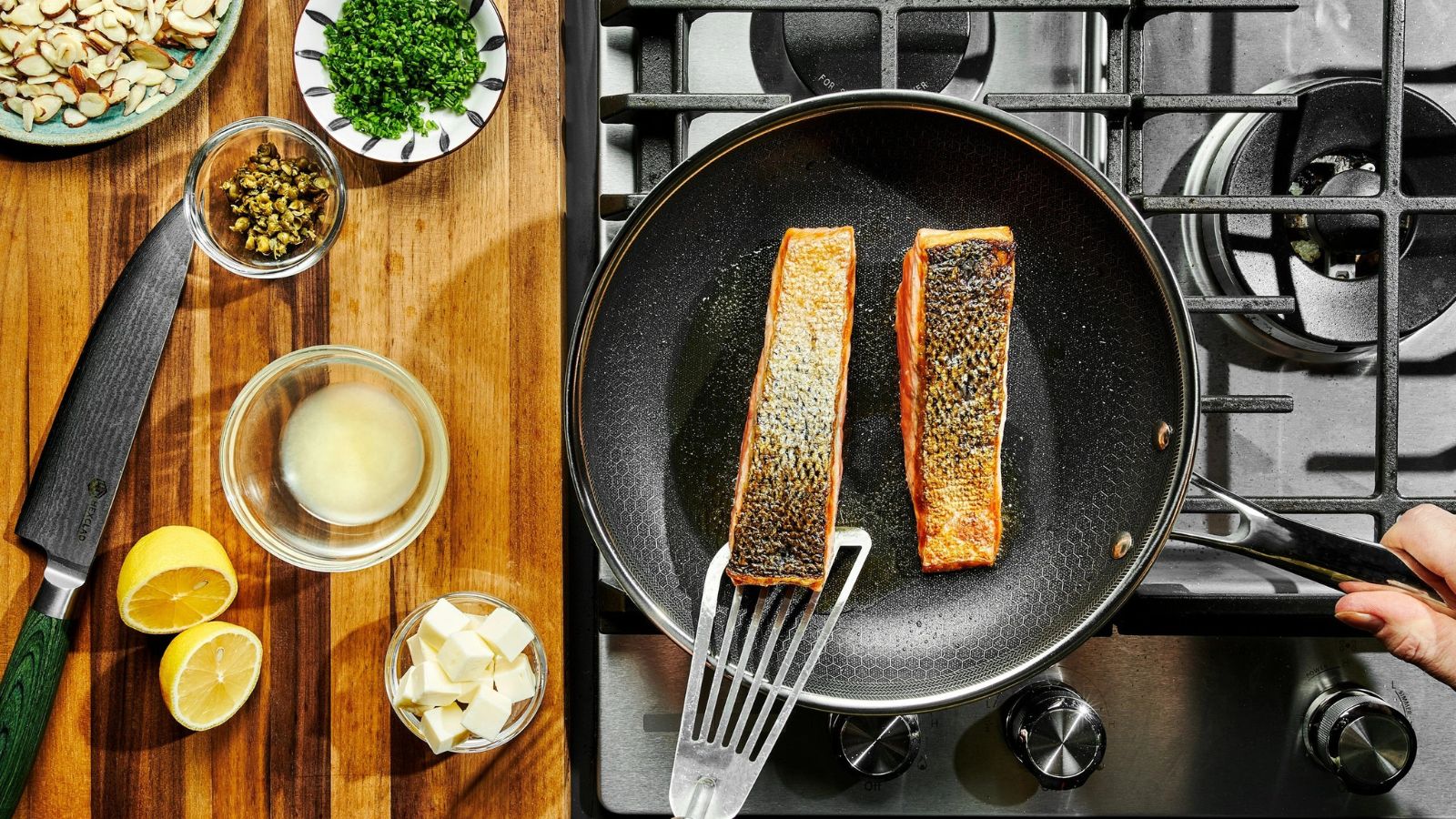
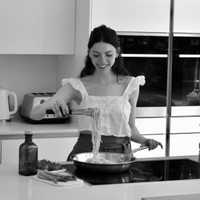
If you've ever browsed the HexClad website, you'll know it’s packed with pans that look remarkably similar, all featuring the brand's iconic honeycomb surface and sleek stainless steel finish (you'll see what I mean from the pictures below). There are tons of variations in shape, size, and price point, so you'd be forgiven for asking: 'Which HexClad pan is best for me?'
That’s where I come in. As a chef and cookware expert, I’ve tested the best non-stick pans from the HexClad collection to help you figure out exactly which ones will suit your cooking style – and which ones might end up at the back of the cupboard as a waste of money.
For this guide, I’ve highlighted five of the best HexClad pans that will be useful for every home cook. If you're still deciding whether the HexClad brand itself is right for you, start by reading my full HexClad hybrid pan review. There, I break down the pros, cons, and comparisons with other cookware brands and materials.
The quick list
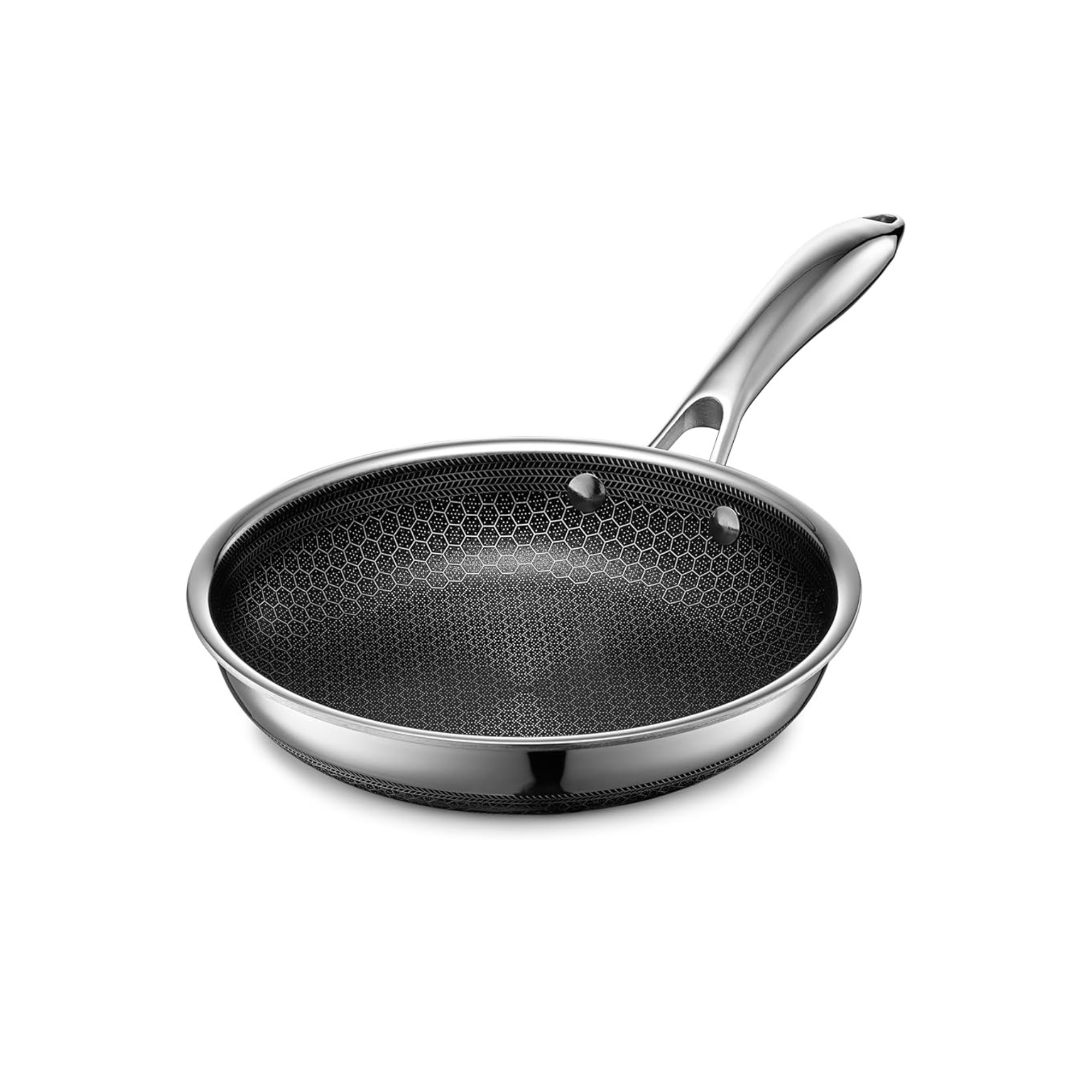
For sizzling steaks and searing seafood, you need this flat, heavy-bottomed pan with low sides. Twelve inches is sufficient for cooking two steaks at once. If you tend to cook one steak at a time, you can go down to the 10-inch size.

The smallest of HexClad frying pans, this 8-inch pan is a breakfast-lover's best friend. It provides enough surface area to cook 1–3 crispy eggs – or a single omelet, allowing for a seamless flip without breakage or undercooking.
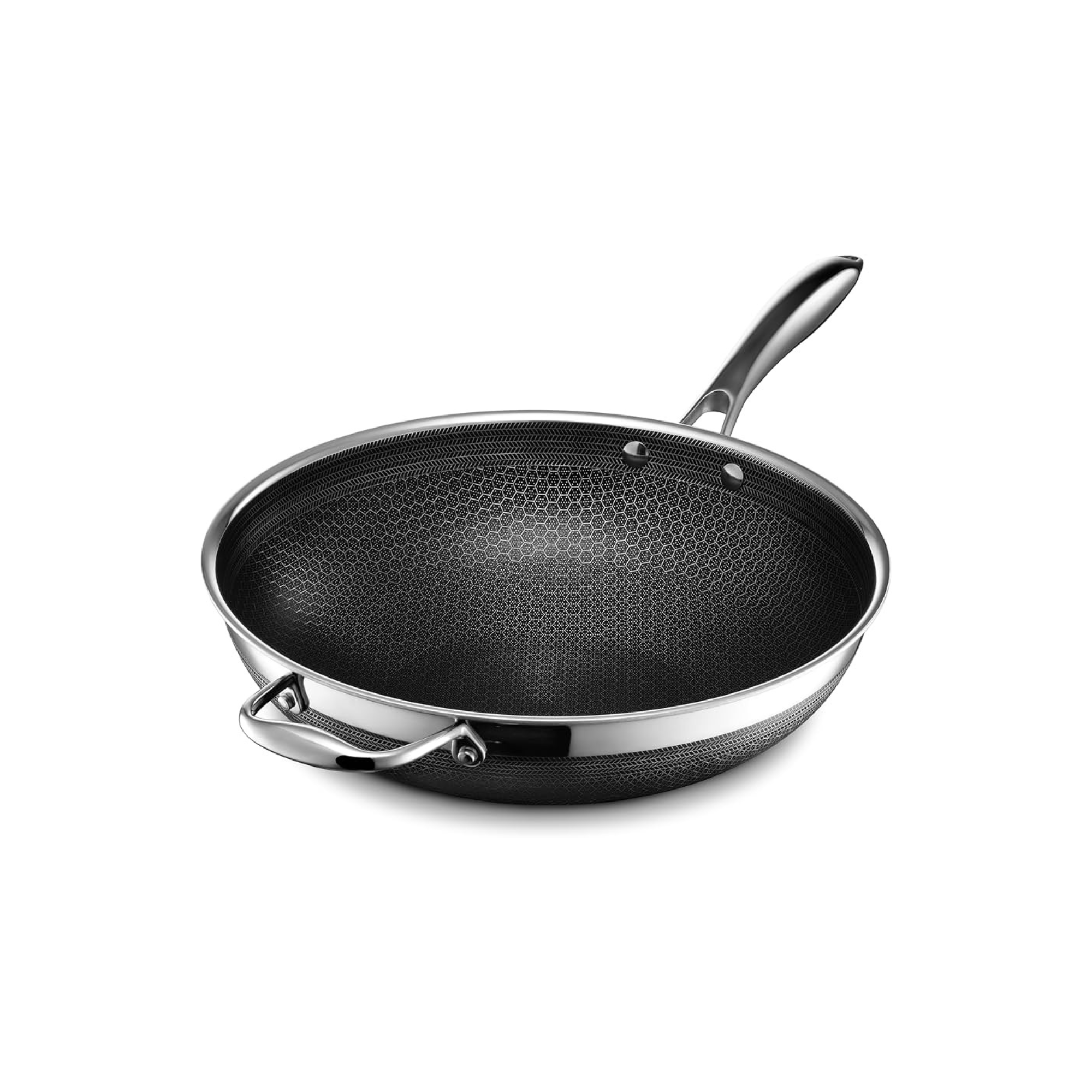
If you love Asian cuisine but hate cleaning sticky sauces and burnt vegetables off your pan, you'll love the HexClad wok. It can sizzle and stir-fry without sticking, and it cleans up without a hitch.
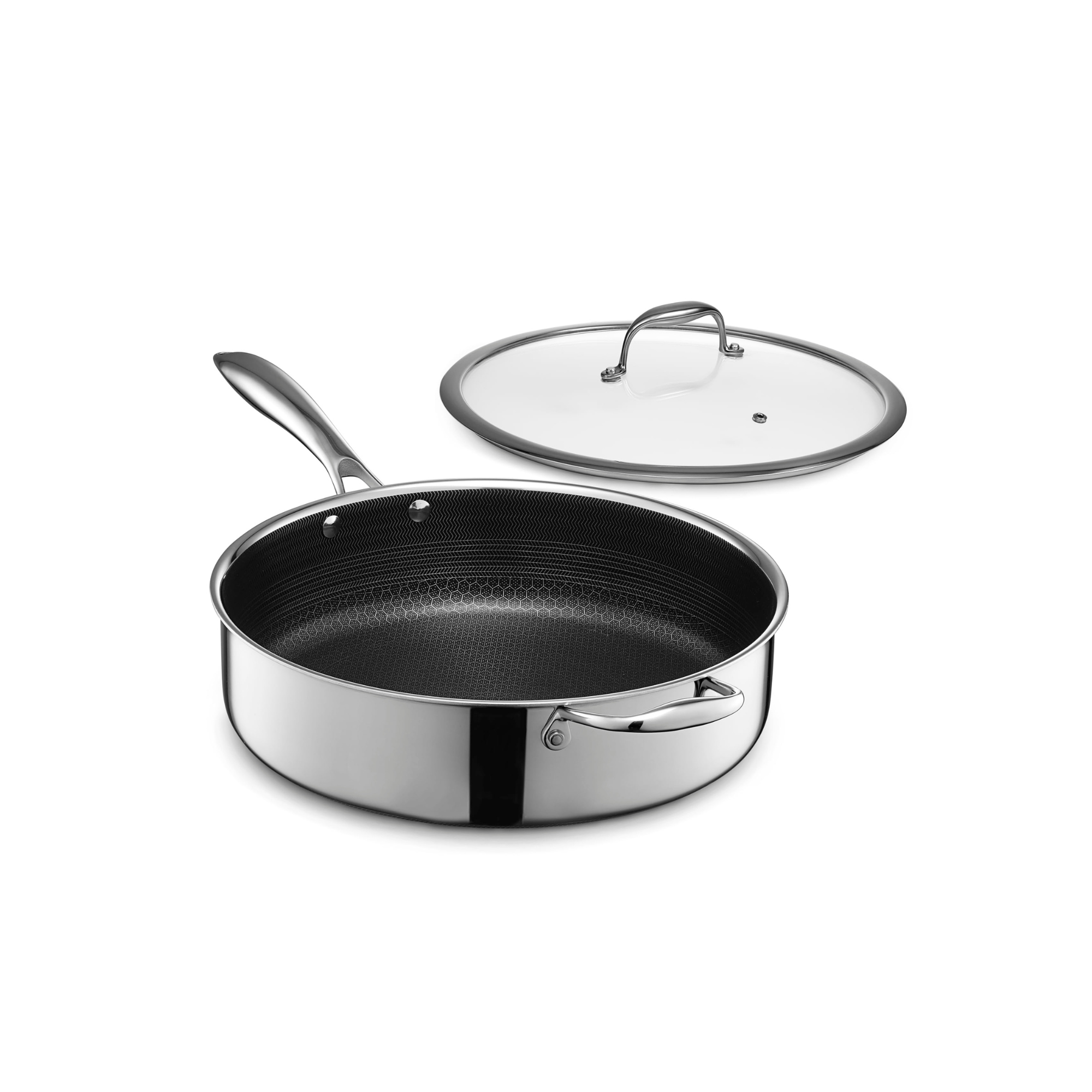
If you make a lot of pasta or curry sauces, you need a pan with higher sides – not HexClad's flatter fry pans. The depth of this sauté pan is perfect for simmering, reducing, deglazing, or layering flavors without boiling or splattering over onto your stove.

I'm a die-hard Le Creuset fan when it comes to slow cooking and braising; but the HexClad Dutch Oven pleasantly surprised me. It's more affordable, light and easy to handle, yet still retains heat well, with a tight lid that locks in moisture.
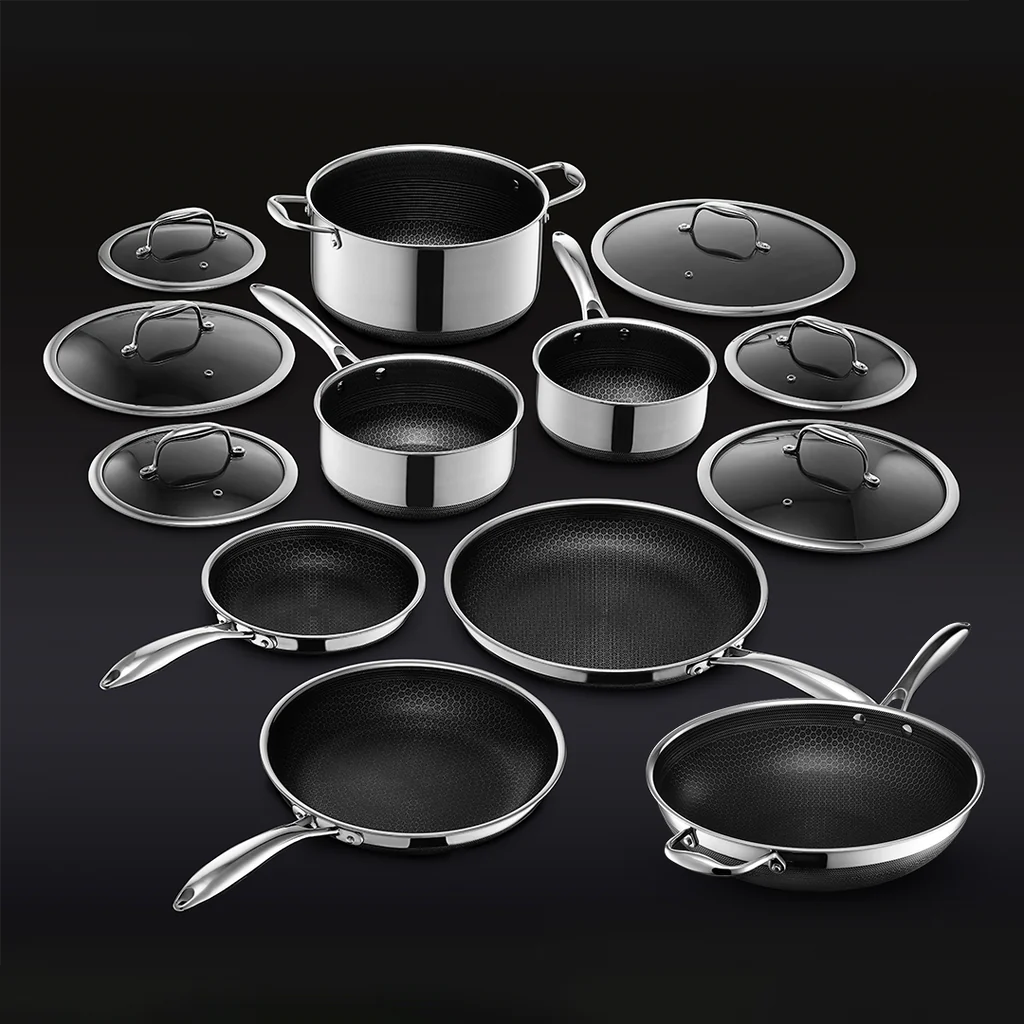
If money if no object, pick this bumper pack of HexClad's best-selling frying pans, saucepans, griddles, and Dutch ovens. It might be overkill for some, but if it's on sale at HexClad if it can work out really good value.
Best HexClad pans 2025
Let's look at the best HexClad frying pans, pots, and woks – and find the right fit for you. Consider this list your cookware match-making service.
Best for steaks & searing

Specifications
Reasons to buy
Reasons to avoid
For sizzling excellent steaks at home, you need a flat, heavy-bottomed pan with low sides for searing. You also need space to get good caramelisation on the steak edges without steaming. Around 12 inches is ideal for two steaks, or if you tend just to cook one steak at a time, you can go down to the 10-inch size.
HexClad's tri-ply construction (stainless steel layers with an aluminum core) gives excellent heat control and distribution, which is critical for searing steak or delicate fish. The rounded edges are excellent for scooping up butter to baste the steak, and the non-stick surface allows for an easy clean-up.
This pan is also great for delicate skin-on fish recipes, like salmon teriyaki, where you want a perfectly crispy skin without sticking or falling to pieces. You can even use a metal fish slice (I use this one from Field Company), without damaging the strong non-stick interior.
It's not ideal for high volume sauces, pastas or chillis, because the sides are too low. You'll want to look at the HexClad Deep Sauté Pan for that.
Best for fried eggs and omelets

Specifications
Reasons to buy
Reasons to avoid
For fried eggs and omelets, the 8-inch HexClad Hybrid Fry Pan is the ideal size. In my tests, I thought it offered just the right surface area to cook 1–3 eggs with crispy, evenly cooked bases – or a single fluffy omelet, with enough room to flip or fold without breakage or undercooking.
The slightly flared sides make it easy to slide your omelets out of the pan and onto a plate. Plus, the excellent heat retention of stainless steel means you can cook on medium or low heat without compromise.
What sets this pan apart from rivals is HexClad’s laser-etched hexagonal non-stick. In my tests, my fried eggs released effortlessly, even with minimal oil or butter. So, whether you're whipping up scrambled eggs or sunny-side-ups, this pan is sure to help you get Gordon Ramsay-level results.
Best for stir fries
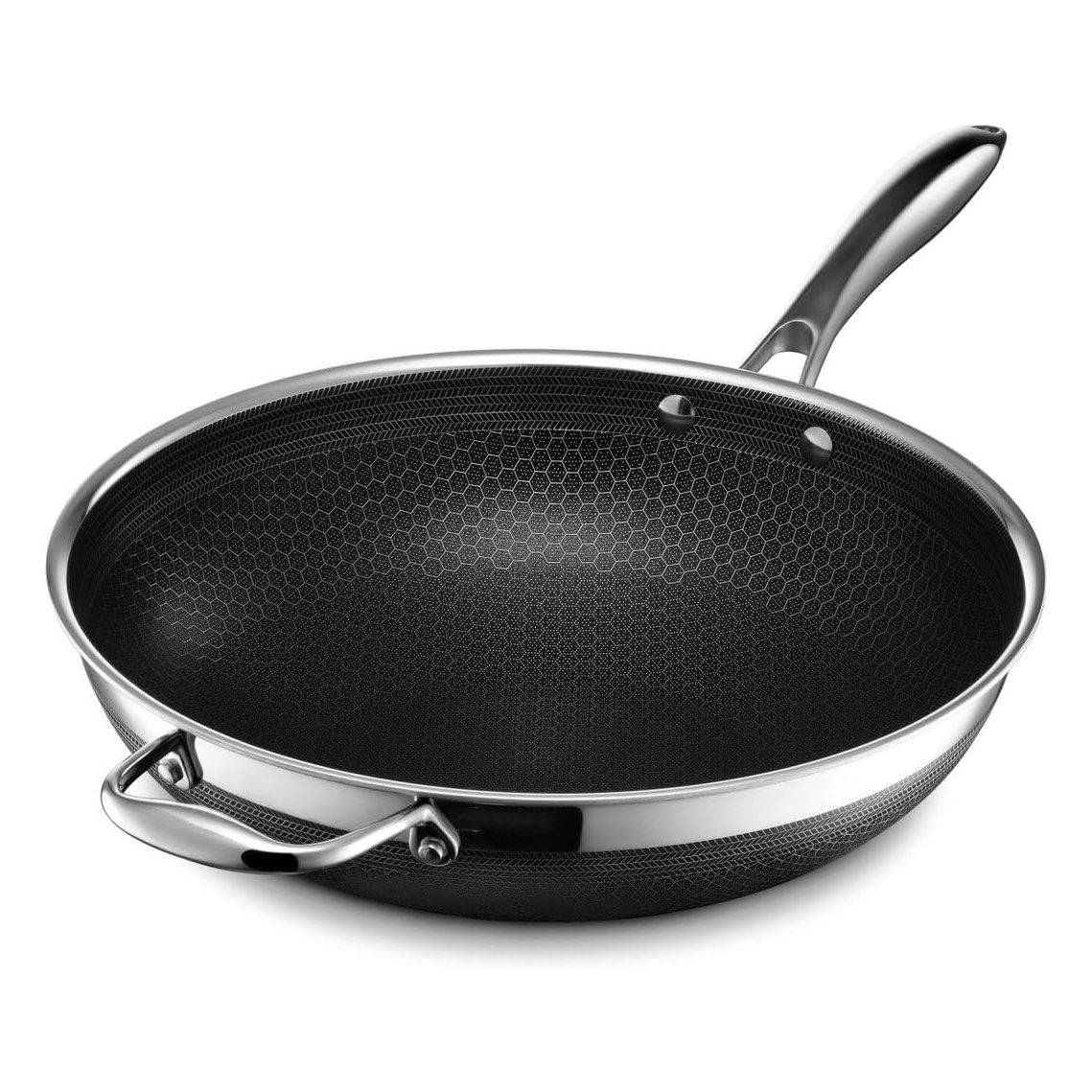
3. HexClad 10 inch Hybrid Wok
Our expert review:
Specifications
Reasons to buy
Reasons to avoid
If you love making stir-fries and noodle dishes, the HexClad wok will become your new favorite pan. Thanks to the hybrid construction, which combines stainless steel with a non-stick ceramic coating, you get the high-heat searing power of stainless steel without the stickiness.
In my tests, it handled everything from hoisin tofu to vegetable noodles with ease – nothing clung to the surface, even with minimal oil. The HexClad wok's high, curved edges and wide base allow for proper tossing and fast, even heat distribution.
One frustration was that it doesn’t come with a lid (unless you order one separately), which limits its versatility. At this price point, I do think that’s something HexClad should include. Also, it worked well on my induction stove in the test kitchen, but I took it home to try on the gas stovetop in my apartment – it wasn't balanced, fell off the grid easily and frustrated me. Something to bear in mind.
Still, if you're looking for a modern wok that is non-stick and easy to clean, this is hard to beat. It’s not traditional, but for convenience and everyday performance, the HexClad wok is a smart, stylish upgrade.
Best for pasta & curry sauces

Specifications
Reasons to buy
Reasons to avoid
The HexClad 3.3 Quart Hybrid Deep Sauté Pan is my go-to for sauces, offering the shape and depth needed for everything from quick weeknight pasta sauces to slow-simmered curries.
The tri-ply stainless steel ensures even heat distribution, while the non-stick material is non-reactive (unlike the best cast iron cookware, for example), which means it’s safe for acidic ingredients like tomatoes or citrus in Italian pasta sauces, Thai green curries, or wine-based reductions.
I also think that the non-stick performance is nice for beginners wanting to layer flavor with ease – from blooming spices to simmering onions, deglazing, and reducing – without sticking or burning.
At just over 3 quarts, it actually offers plenty of space for stirring without spilling. However, I'd recommend the small saucepan with taller, narrower sides for gravies or thinner sauces that need less evaporation – and you don't really need an expensive non-stick pan for that task, but they are much easier to clean.
Best for soups & slow-cooking

Specifications
Reasons to buy
Reasons to avoid
If you want a HexClad pan that cooks low-and-slow dishes like stews, soups, chillis, and pot roasts, you need a Dutch oven.
I have to admit, I'm a die-hard Le Creuset fan when it comes to slow-cooking casseroles and simmering soup; but the HexClad Dutch Oven pleasantly surprised me.
Compared to a traditional cast iron Dutch oven, I found the HexClad alternative lighter and easier to handle, with the bonus of the hybrid non-stick surface that makes cleanup easier and helps prevent stuck-on bits. This is always handy when starting a dish with simmered onions, garlic, and spices. It is also much cheaper than the rival brands.
The tri-ply construction created a steady heat; I achieved nice browning on my chilli con carne mince, and the classic 5-quart capacity allowed plenty of room for stock, beans, and bunches of kale. Finally, the lid is heavy and fits tightly onto the pot, helping lock in moisture, which is essential for keeping meat tender and juicy.
How I test the best HexClad pans
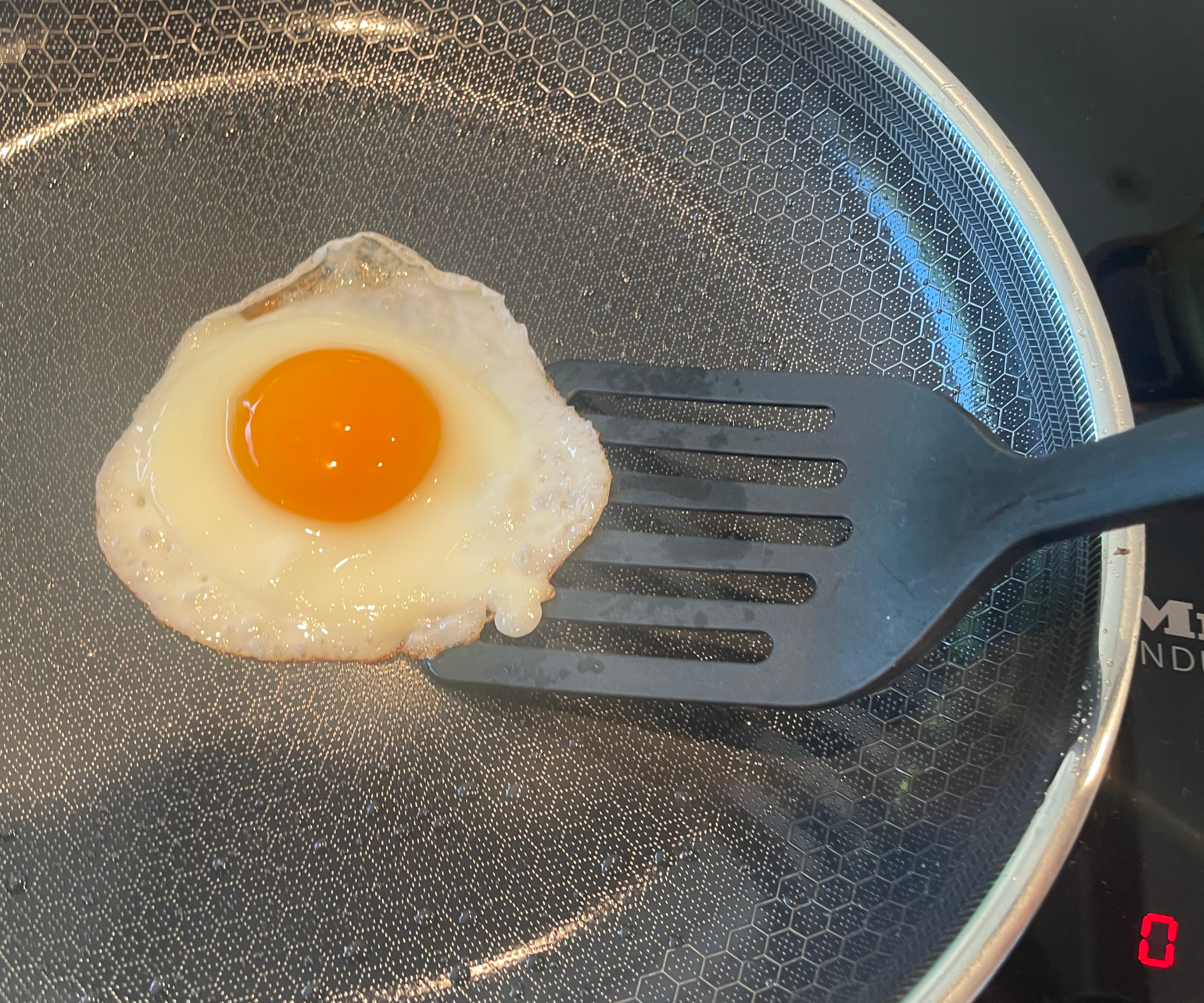
I’ve tested countless pots and pans in all shapes and sizes to figure out what really suits specific recipes, because not every pan is built to do it all. A pan that’s perfect for searing a steak might be too heavy for everyday egg-frying, and something great for simmering sauces might fall short when reducing quickly. Understanding these differences is what drove my mission to uncover the best HexClad pans.
I use each piece for at around a month, putting it through real-life cooking experience – from simple weeknight dinners to more technical recipe testing. I want to know how it performs not just out of the box, but after repeated use. Too many pans appear very pretty and practical at first, then start to stick, stain, or frustrate you after time.
I deliberately test with tricky, tell-all recipes: fried eggs, paneer, tofu, halloumi, sticky sauces, and high-heat steak sears. These ingredients quickly reveal a pan’s strengths and flaws – especially when it comes to non-stick pans like HexClad. I also take notes on the space in the pan, how easy it is to flip/transfer ingredients, the heat retention, and how comfortable the pan feels in hand.
Finally, I should mention: I have a professional cookery qualification and years of experience as a food writer and recipe editor for brands like Mindful Chef and Deliciously Ella. For me, the best cookware earns its place in your kitchen by making cooking easier, not harder.
FAQS
Are HexClad pans good?
HexClad pans are really good in my professional opinion. After three months of using HexClad's Hybrid Fry Pans, I do think that the brand lives up to the non-stick hype (and Gordon Ramsey's praise).
The hexagonal surface is seriously effective, delivering seamless results on sticky ingredients (fried eggs, tofu, halloumi, salmon teriyaki) with minimal maintenance and pretty much zero technique.
If you’re a beginner cook, looking to level up your recipes, or you're just fed up with your sticky, flaky Teflon pans, I think HexClad is worth the investment. I particularly rate the wok I tested; it's the pan I use almost every night now for speedy stir-fries for weeknight dinners.
My only caveat is that I still end up using my Le Creuset Dutch Oven for stews, and my Hestan Copperbond Pan for sautéing and searing. It's just a matter of personal taste, but I like the way these pans feel – and I love the beautiful, French vibe they bring to my kitchen.
How many pans do I actually need?
You probably don't need as many pans as you think. I usually recommend four or five essentials. As a cookware tester, I own around 30 pans, but this is what I end up using on a weekly basis in my kitchen at home: a small non-stick pan for eggs, a larger stainless steel pan for everyday sautéing and searing, and a heavy-bottomed saucier for simmering and building sauces.
In terms of pots, you'll want to add a small saucepan (for béchamels and gravies) and large stock pot (for boiling broth or cooking pasta, etc). If you love to roast, braise or make soup, a Dutch oven always comes in handy, too.
HexClad vs Our Place: Which brand is better?
If you can't decide between HexClad vs Our Place, I can understand why. While Our Place is often associated with pastel tones and Instagram kitchens, it stepped into HexClad’s territory last year with the launch of the Titanium Always Pan Pro. It has the honeycomb pattern that HexClad is famous for, without a coating.
After testing both pans across multiple meals and cleanup sessions, the winner ultimately depends on what kind of cook you are.
HexClad wins on non-stick. It's unbeaten on delicate foods like eggs and tofu – and easier to clean by hand. The stainless steel and flat shape are excellent for searing meat and fish, too.
Our Place is best for style and versatility. The Titanium Always Pan Pro offers a deeper, more flexible shape, a sleek, design-forward aesthetic, and true dishwasher safety. It’s ideal for one-pan meals, but the stickier 'No-Coating' surface might frustrate some cooks.
HexClad vs Caraway: Which brand is better?
When it comes to HexClad vs Caraway, the answer is pretty simple. If you're a performance-driven cook who values flexibility, high heat, and long-term durability, HexClad is hard to beat. It does the job of a stainless pan and a non-stick one, and it can stand up to almost any cooking task, making HexClad the overall winner in my Hexclad vs Caraway tests.
But if you’re drawn to bright colors, lightweight construction, and you need a more accessible price tag, Caraway might be your match. It’s stylish and easy for everyday meals that don’t require a professional-grade finish. However, in my opinion, Caraway can't outperform or outlast HexClad, so it isn't such a great investment.
Having tested them both, I personally prefer HexClad's professional sear and sturdy build, but your choice really depends on your budget, kitchen aesthetic, and what kind of cook you are, or aspire to be.
HexClad vs All-Clad: What is the difference?
The difference between HexClad and All-Clad is quite dramatic, although the names sound similar.
All-Clad pans are constructed from layers of stainless steel and conductive aluminum for durability and heat retention. All-Clad is one of the best American-made cookware brands. All-Clad was founded in 1971 in Pennsylvania – the birthplace of the American steel and aluminum industry and a region with a deep-rooted history in metalworking.
HexClad aims to combine the best features of stainless steel and non-stick into a single 'hybrid' pan. Founded much more recently, in 2016 in Los Angeles, HexClad features a patented HexClad design with laser-etched hexagons that create a dual surface: stainless steel 'peaks' for searing and durability, and non-stick 'valleys' for easy release and cleanup.
HexClad is not made in America, but in China. Celebrity chef Gordon Ramsay famously endorsed the brand, which is why it is so famous today.
Whether you should buy All-Clad or HexClad depends on your cooking style and expertise; restaurant professionals often prefer stainless steel, while home cooks tend to prefer the ease of non-stick.
Why is everything sticking to my HexClad pans?
Food could be sticking to your HexClad pan for a number of reasons. It may because you need to season your pan. This step is essential before first use – and you can repeat the process after any deep cleaning or instances of sticking.
Cooking at a high temperature could be another reason everything is sticking to your HexClad pan. Try cooking on medium-low heat, with plenty of cooking oil for lubrication. In my guide to making any pan non-stick, I recommend ensuring your ingredients aren't really cold, straight from the fridge when you add them to a hot pan, as this can cause trouble.
Non-stick pans aren't perfect; they require a little TLC and technique. HexClad say: 'To season your pans properly, heat your pan on medium-low. Spread 1 teaspoon of Vegetable, Avocado, or Olive Oil around the interior of the pan. Leave your pan on medium heat for 2-4 minutes. If you are ready to cook, feel free to use the pan right away. If you are not ready to cook, allow the pan and oil cool down before washing it out with warm soapy water.'
How do I know which size pan to pick?
The size of your pan should suit both your ingredients and your stovetop. I've listed some general recommendations in this guide, but the golden rule is: don’t crowd the pan. Air and space around your ingredients is the key to caramelized onions, seared steaks, and crispy fried eggs.
Design expertise in your inbox – from inspiring decorating ideas and beautiful celebrity homes to practical gardening advice and shopping round-ups.
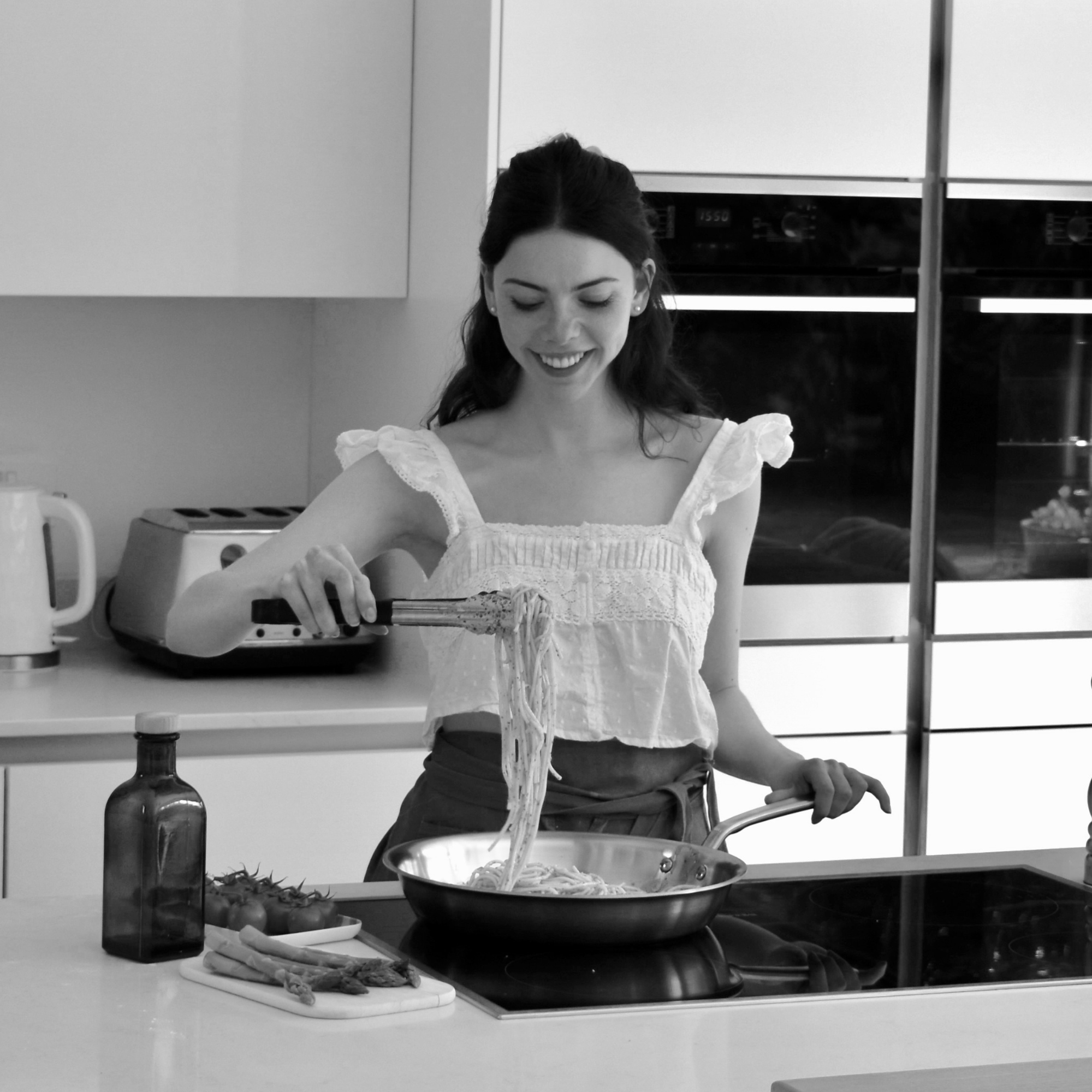
Lydia is the Kitchen Appliances Editor for Homes & Gardens, testing everything from air fryers and mixers to juicers and coffee machines. She trained in Culinary Arts at Leiths School of Food & Wine and previously served as the Recipe Editor for Mindful Chef.